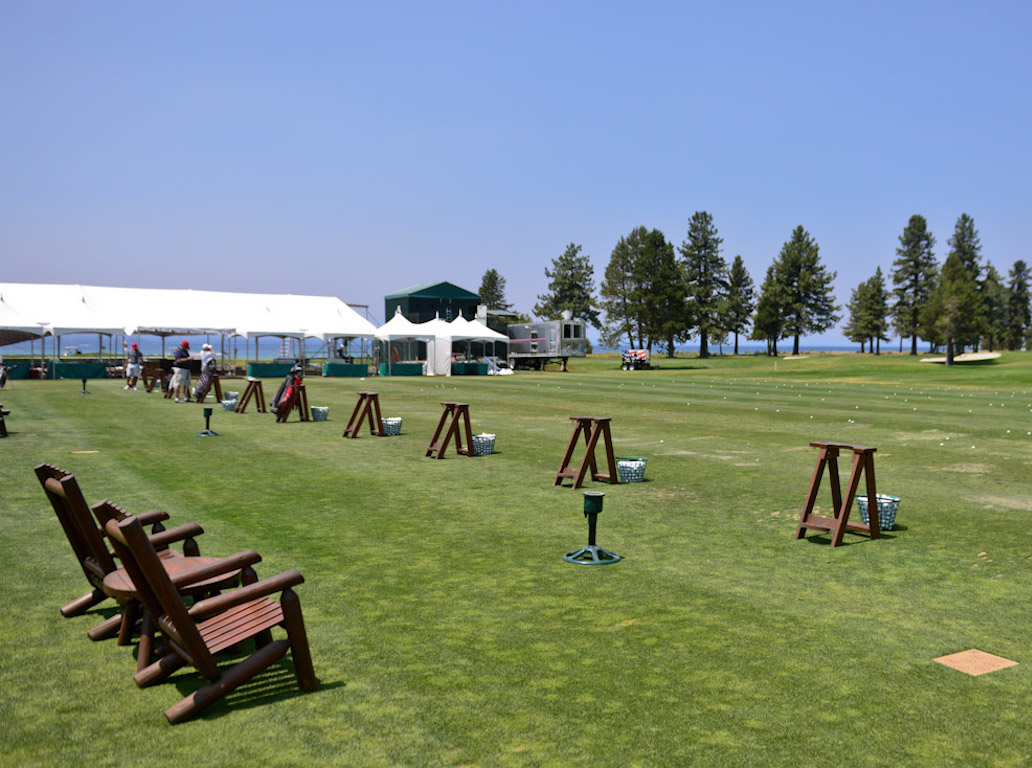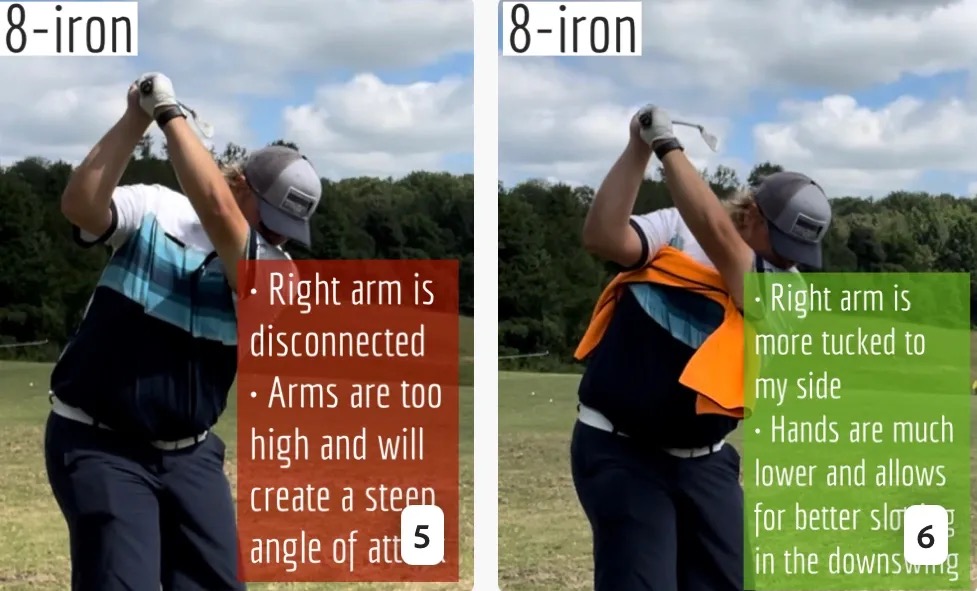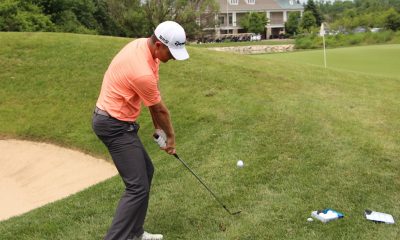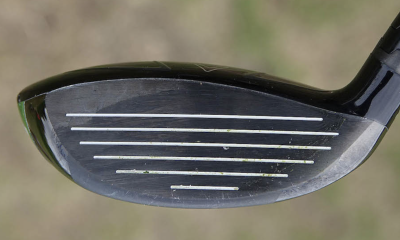Instruction
The Wedge Guy: My top 5 practice tips

While there are many golfers who barely know where the practice (I don’t like calling it a “driving”) range is located, there are many who find it a place of adventure, discovery and fun. I’m in the latter group, which could be accented by the fact that I make my living in this industry. But then, I’ve always been a “ball beater,” since I was a kid, but now I approach my practice sessions with more purpose and excitement. There’s no question that practice is the key to improvement in anything, so today’s topic is on making practice as much fun as playing.
As long as I can remember, I’ve loved the range, and always embrace the challenge of learning new ways to make a golf ball do what I would like it to do. So, today I’m sharing my “top 5” tips for making practice fun and productive.
- Have a mission/goal/objective. Whether it is a practice range session or practice time on the course, make sure you have a clearly defined objective…how else will you know how you’re doing? It might be to work on iron trajectory, or finding out why you’ve developed a push with your driver. Could be to learn how to hit a little softer lob shot or a knockdown pitch. But practice with a purpose …always.
- Don’t just “do”…observe. There are two elements of learning something new. The first is to figure out what it is you need to change. Then you work toward that solution. If your practice session is to address that push with the driver, hit a few shots to start out, and rather than try to fix it, make those first few your “lab rats”. Focus on what your swing is doing. Do you feel anything different? Check your alignment carefully, and your ball position. After each shot, step away and process what you think you felt during the swing.
- Make it real. To just rake ball after ball in front of you and pound away is marginally valuable at best. To make practice productive, step away from your hitting station after each shot, rake another ball to the hitting area, then approach the shot as if it was a real one on the course. Pick a target line from behind the ball, meticulously step into your set-up position, take your grip, process your one swing thought and hit it. Then evaluate how you did, based on the shot result and how it felt.
- Challenge yourself. One of my favorite on-course practice games is to spend a few minutes around each green after I’ve played the hole, tossing three balls into various positions in an area off the green. I don’t let myself go to the next tee until I put all three within three feet of the hole. If I don’t, I toss them to another area and do it again. You can do the same thing on the range. Define a challenge and a limited number of shots to achieve it.
- Don’t get in a groove. I was privileged enough to watch Harvey Penick give Tom Kite a golf lesson one day, and was struck by the fact that he would not let Tom hit more than five to six shots in a row with the same club. Tom would hit a few 5-irons, and Mr. Penick would say, “hit the 8”, then “hit the driver.” He changed it up so that Tom would not just find a groove. That paved the way for real learning, Mr. Penick told me.
My “bonus” tip addresses the difference between practicing on the course and keeping a real score. Don’t do both. A practice session is just that. On-course practice is hugely beneficial, and it’s best done by yourself, and at a casual pace. Playing three or four holes in an hour or so, taking time to hit real shots into and around the greens, will do more for your scoring skills than the same amount of range time.
So there you have my five practice tips. I’m sure I could come up with more, but then we always have more time, right?
More from the Wedge Guy
- The Wedge Guy: Anyone can be a better wedge player by doing these simple things
- Wedge Guy: There’s no logic to iron fitting
- The Wedge Guy: Mind the gap
- LIKE96
- LEGIT12
- WOW1
- LOL2
- IDHT0
- FLOP1
- OB1
- SHANK7
Instruction
How a towel can fix your golf swing

This is a classic drill that has been used for decades. However, the world of marketed training aids has grown so much during that time that this simple practice has been virtually forgotten. Because why teach people how to play golf using everyday items when you can create and sell a product that reinforces the same thing? Nevertheless, I am here to give you helpful advice without running to the nearest Edwin Watts or adding something to your Amazon cart.
For the “scoring clubs,” having a solid connection between the arms and body during the swing, especially through impact, is paramount to creating long-lasting consistency. And keeping that connection throughout the swing helps rotate the shoulders more to generate more power to help you hit it farther. So, how does this drill work, and what will your game benefit from it? Well, let’s get into it.
Setup
You can use this for basic chip shots up to complete swings. I use this with every club in my bag, up to a 9 or 8-iron. It’s natural to create incrementally more separation between the arms and body as you progress up the set. So doing this with a high iron or a wood is not recommended.
While you set up to hit a ball, simply tuck the towel underneath both armpits. The length of the towel will determine how tight it will be across your chest but don’t make it so loose that it gets in the way of your vision. After both sides are tucked, make some focused swings, keeping both arms firmly connected to the body during the backswing and follow through. (Note: It’s normal to lose connection on your lead arm during your finishing pose.) When you’re ready, put a ball in the way of those swings and get to work.

Get a Better Shoulder Turn
Many of us struggle to have proper shoulder rotation in our golf swing, especially during long layoffs. Making a swing that is all arms and no shoulders is a surefire way to have less control with wedges and less distance with full swings. Notice how I can get in a similar-looking position in both 60° wedge photos. However, one is weak and uncontrollable, while the other is strong and connected. One allows me to use my larger muscles to create my swing, and one doesn’t. The follow-through is another critical point where having a good connection, as well as solid shoulder rotation, is a must. This drill is great for those who tend to have a “chicken wing” form in their lead arm, which happens when it becomes separated from the body through impact.
In full swings, getting your shoulders to rotate in your golf swing is a great way to reinforce proper weight distribution. If your swing is all arms, it’s much harder to get your weight to naturally shift to the inside part of your trail foot in the backswing. Sure, you could make the mistake of “sliding” to get weight on your back foot, but that doesn’t fix the issue. You must turn into your trial leg to generate power. Additionally, look at the difference in separation between my hands and my head in the 8-iron examples. The green picture has more separation and has my hands lower. This will help me lessen my angle of attack and make it easier to hit the inside part of the golf ball, rather than the over-the-top move that the other picture produces.


Stay Better Connected in the Backswing
When you don’t keep everything in your upper body working as one, getting to a good spot at the top of your swing is very hard to do. It would take impeccable timing along with great hand-eye coordination to hit quality shots with any sort of regularity if the arms are working separately from the body.
Notice in the red pictures of both my 60-degree wedge and 8-iron how high my hands are and the fact you can clearly see my shoulder through the gap in my arms. That has happened because the right arm, just above my elbow, has become totally disconnected from my body. That separation causes me to lift my hands as well as lose some of the extension in my left arm. This has been corrected in the green pictures by using this drill to reinforce that connection. It will also make you focus on keeping the lead arm close to your body as well. Because the moment either one loses that relationship, the towel falls.


Conclusion
I have been diligent this year in finding a few drills that target some of the issues that plague my golf game; either by simply forgetting fundamental things or by coming to terms with the faults that have bitten me my whole career. I have found that having a few drills to fall back on to reinforce certain feelings helps me find my game a little easier, and the “towel drill” is most definitely one of them.
- LIKE10
- LEGIT1
- WOW2
- LOL0
- IDHT0
- FLOP2
- OB0
- SHANK7
Instruction
Clement: Why your practice swing never sucks

You hear that one all the time; I wish I could put my practice swing on the ball! We explain the huge importance of what to focus on to allow the ball to be perfectly in the way of your practice swing. Enjoy!
- LIKE0
- LEGIT0
- WOW0
- LOL0
- IDHT0
- FLOP0
- OB0
- SHANK1
Instruction
Clement: This is when you should release the driver

The golf teaching industry is slowly coming around to understand how the human machine is a reaction and adaptation machine that responds to weight and momentum and gravity; so this video will help you understand why we say that the club does the work; i.e. the weight of the club releases your anatomy into the direction of the ball flight.
- LIKE4
- LEGIT0
- WOW1
- LOL0
- IDHT0
- FLOP0
- OB0
- SHANK1
-

 Opinion & Analysis1 week ago
Opinion & Analysis1 week agoThe Wedge Guy: Golf mastery begins with your wedge game
-

 Accessory Reviews2 weeks ago
Accessory Reviews2 weeks agoInsider photos from Tiger Woods’ launch event for his new “Sun Day Red” apparel line
-

 19th Hole3 weeks ago
19th Hole3 weeks agoBrandel Chamblee outlines what his tough road back to PGA Tour would look like for LIV pros
-

 19th Hole2 days ago
19th Hole2 days agoThis Rory McIlroy post-round ‘The Match’ moment is going viral…but all is likely not what it seems
-

 19th Hole2 weeks ago
19th Hole2 weeks agoTiger Woods opts for veteran caddie to loop for him this week at Riviera
-

 19th Hole2 weeks ago
19th Hole2 weeks ago6-time Euro Tour champ says Patrick Cantlay ‘should be nailed with a huge fine’ over Genesis incident
-

 19th Hole2 days ago
19th Hole2 days agoAnthony Kim’s speculated LIV Golf sign-on fee may surprise you
-

 19th Hole7 days ago
19th Hole7 days ago‘Yuck’ – Cringe driving range mansplaining incident towards PGA pro goes viral
























Ned
Oct 19, 2023 at 6:28 am
“Playing three or four holes in an hour or so, taking time to hit real shots into and around the greens” Great idea but isn’t possible at most courses they’re booked up.
Pingback: The Wedge Guy: 3 surefire ways to never get better at golf – GolfWRX
Brandon
Sep 23, 2023 at 9:10 pm
” I don’t let myself go to the next tee until I put all three within three feet of the hole. If I don’t, I toss them to another area and do it again.”
Wow, really, nothing like encouraging slow play.
There are practice greens for this, during a round is not the time.
geohogan
Sep 22, 2023 at 9:57 pm
Tips and check lists… thats all you’ve got.
geohogan
Sep 23, 2023 at 3:17 pm
Does Max Verstappen refer to a check list at 200+ MPH
or did Tiger at top of BS? When consciously directed movement
is not possible eg from top of BS to impact in golf swing
it is only the correct, singular intention that counts.
Bob Jones
Sep 22, 2023 at 10:30 am
Great tips. Numbers 3, 4, and 5, absolutely, though I do #4 mainly around the practice green, and on the course only to practice a shot that a particular green might offer. I think numbers 1 and 2 are productive only if you know what you are doing. Get a lesson and then practice what you learned.